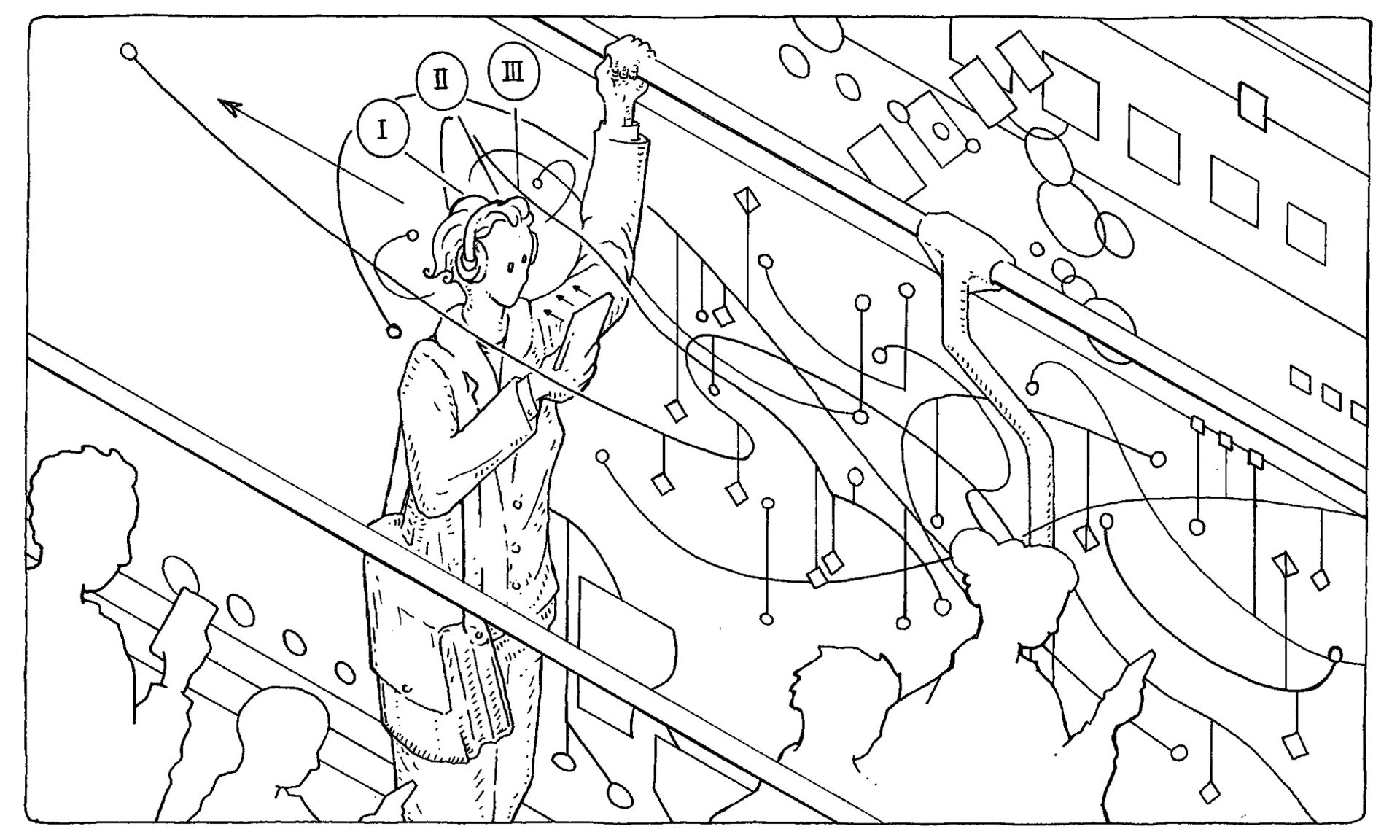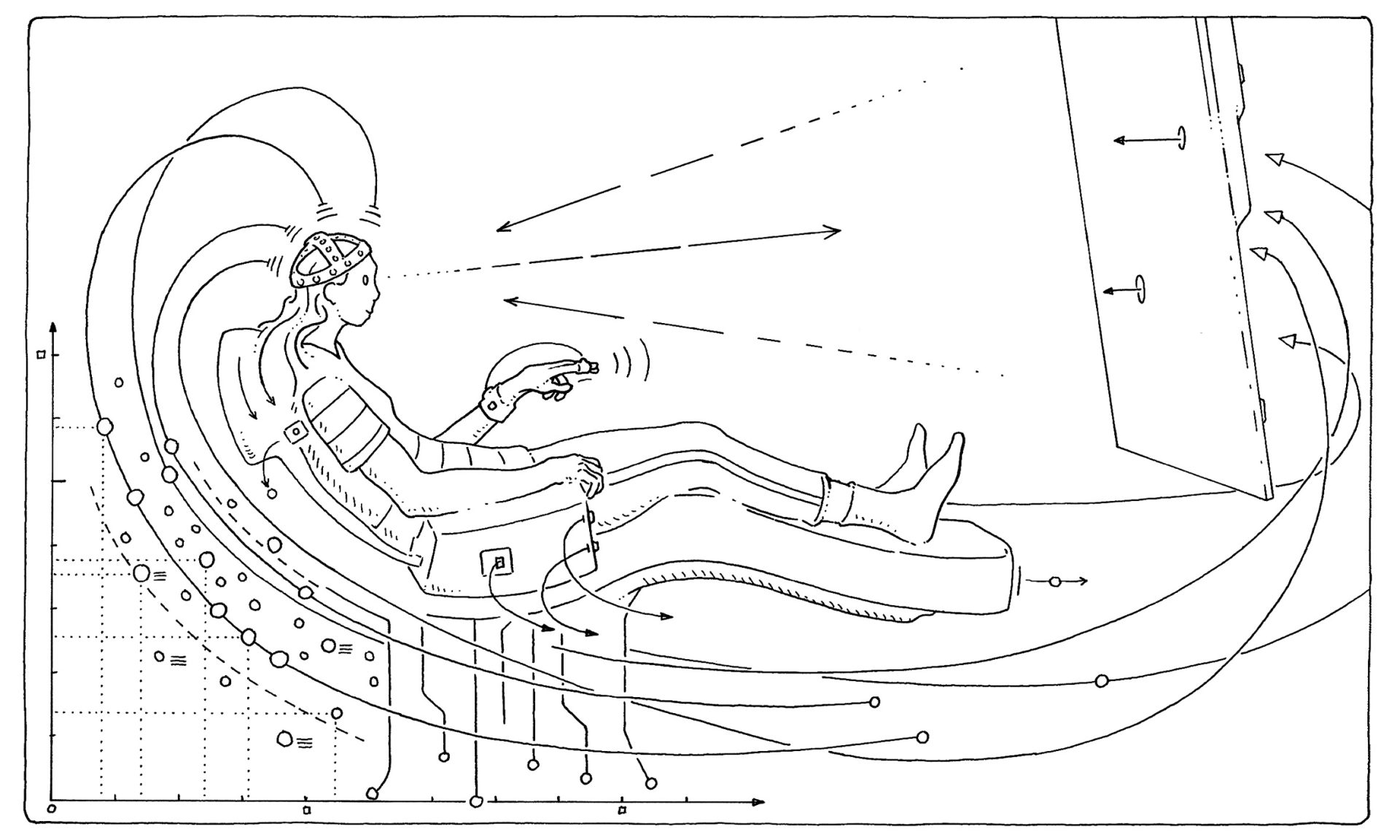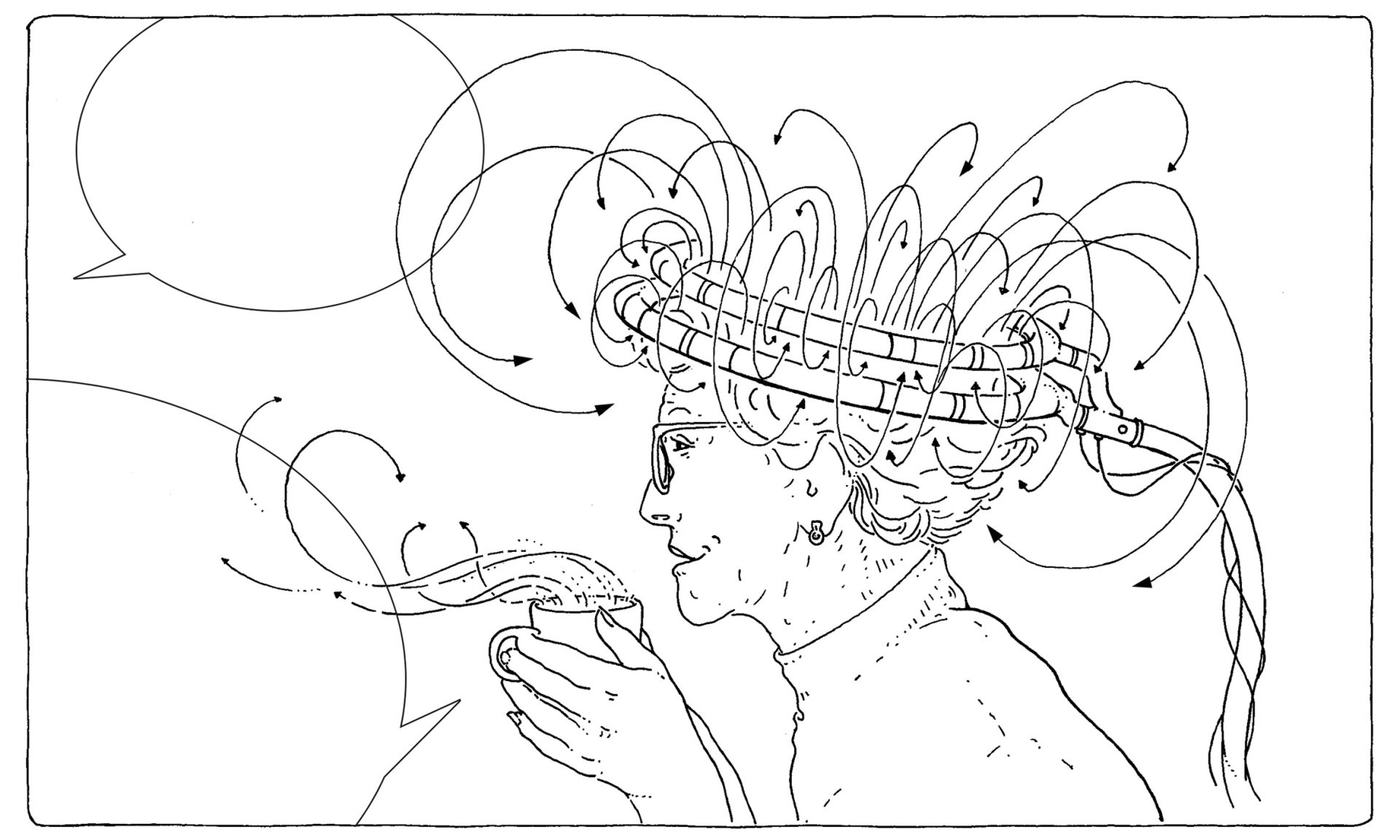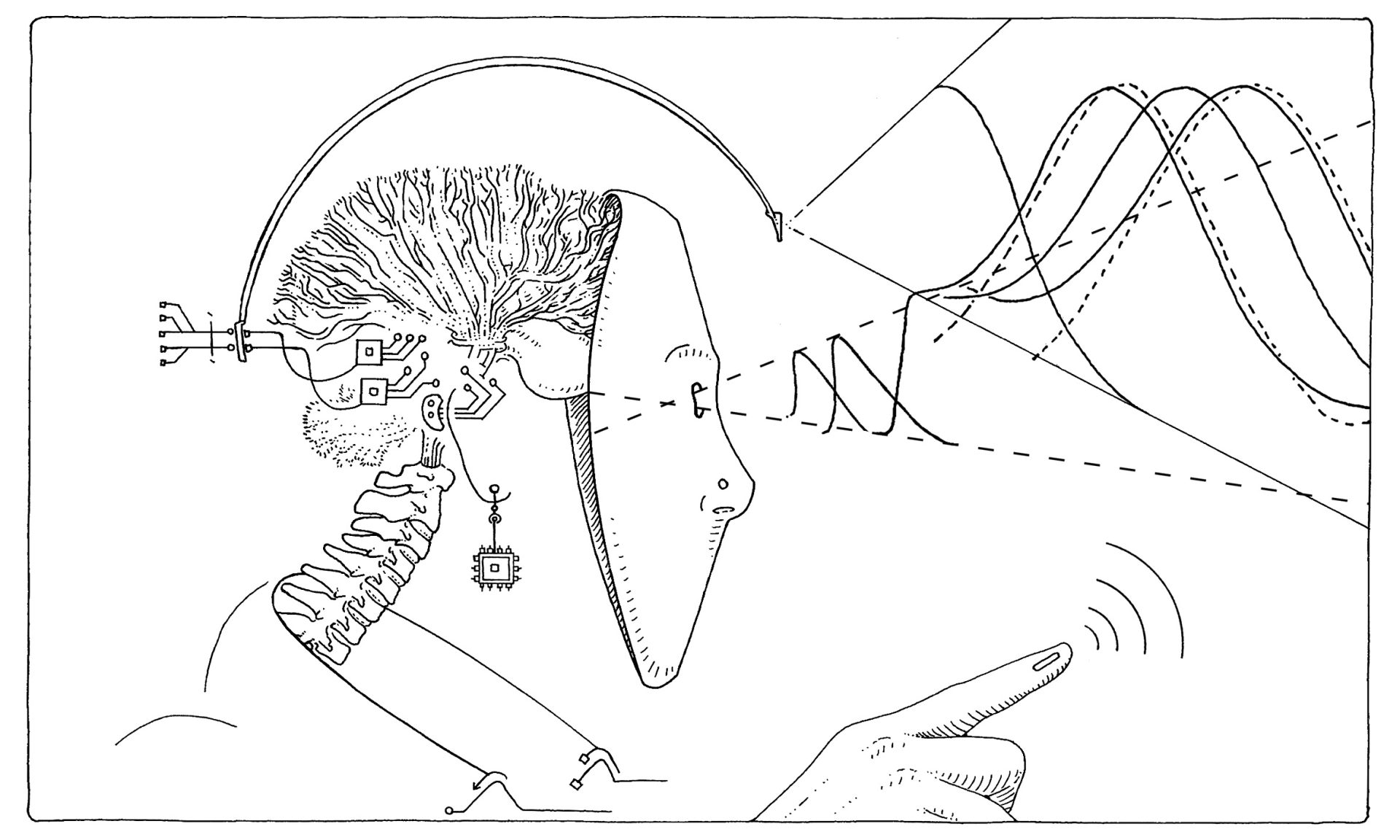Feature: The limits of brain research
We can all be super
It happens to everyone: sometimes we forget names, we can’t concentrate properly in an exam, or maybe we feel that we’re catching on slower than everyone else around us. Luckily, there are tricks to help us improve brain performance. Yvonne Vahlensieck has been checking up to see if they achieve what they promise.

Brain jogging – Games have to be strenuous
Sudoku, crosswords, memory games, puzzles – all these little apps on our smartphones are supposed to be both entertaining and useful for improving cognitive skills. At least that’s what their advertising promises. Regrettably, it’s just not true. These mini-games only ever train one specific skill that can’t be transferred to other tasks. “If you train your big toe, you won’t get muscles in your arm”, says Daphné Bavelier, a professor of neurosciences at the University of Geneva.
The problem is this: over time, the mental techniques that we can learn from these games become automatic and end up requiring little effort from the regions of our brain that are responsible for complex problem-solving. “A successful transfer requires an activity that is challenging for the prefrontal cortex and, most importantly, remains challenging”, says Bavelier.
As her research shows, some video games – such as the first-person shooting game ‘Call of Duty’ – can indeed help to put the brain in the desired state. These games require flexible switches between different states of attention – your attention shifts as you move around, and is then focused as you target your enemies. This trains your attentional control, which is an ideal prerequisite for learning new things quickly. The effect can last for months, especially with regular booster game sessions. That’s good news for passionate gamers – though Bavelier notes that short practice sessions distributed over several weeks are best. There’s no need for bingeing.
For people who nevertheless want to get the best out of mini-game apps, she has a tip: “It’s best to pick games that you’re really bad at, and that you find taxing”. It is possible that this keeps the brain so busy that it still has a positive effect on your general cognitive abilities. But it’s another matter entirely as to whether playing this way is still fun.

Mindfulness training – More focus makes you stronger
“Mindfulness training is a special form of meditation”, says Patricia Cernadas Curotto, a psychologist at the University of Geneva. “It teaches participants to focus their attention consciously on the present moment, without judging their perceptions”. This is done, for example, by concentrating on your breathing or your sensory impressions. As she knows from personal experience: once you’ve learned the technique, you can call upon it at any time in your everyday life.
There is almost nothing that mindfulness isn’t supposed to help with, from general well-being and stress resilience to improving your working memory and your ability to solve complex problems. These aren’t just hollow promises from course providers, because more and more studies are confirming it. Apparently, these exercises can even alter the connections between different areas of the brain.
But couldn’t this be achieved just as well by relaxing? “No, it’s not about resting, it’s about actively focusing”, says Nathalie Mella, who is also a psychologist at the University of Geneva. She is currently investigating whether mindfulness training can help children in school.

Neurofeedback – Useful only as a therapy
Can you activate your visual cortex at will? Or send more oxygen to the areas of the brain that are responsible for your memory? It might sound impossible, but it’s not. With the help of neurofeedback, most people can learn to do all this in just a few hours. During neurofeedback training, your brain waves or blood circulation in the brain are measured using an electroencephalogram (EEG) or functional magnetic resonance imaging (fMRI). You then get feedback in real-time – e.g., through an expanding green bar on a screen – to tell you the degree of activity in the desired region of the brain.
While neurofeedback has mostly been studied as a means of treating diseases such as depression, it also helps, for example, in improving your working memory or your visual perception. But Frank Scharnowski, a cognitive scientist at the University of Vienna who is involved in several Swiss projects on the topic, suggests caution is in order. “Let’s not get carried away”, he says. “The data situation is still pretty tenuous”. It remains uncertain, for example, whether or not the abilities learned can be retained without the aid of constant training, and if so, for how long. And using the expensive technological means that are needed does not make much sense outside of a medical context.
All the same, some tech companies have already jumped on the bandwagon. They are offering headgear that measures brain waves or blood flow in a simplified way, and that provides feedback through linking up with an app. One manufacturer even promises that its product will “revolutionise brain health”. Scharnowski won’t completely rule out the possibility that these devices might indeed have a positive impact. “But if all our sophisticated methods in the laboratory can’t prove any sustainable impact, how is a commercial device supposed to achieve it? Personally, I’m confident that this technology will at some point achieve a breakthrough. But for the moment, I wouldn’t spend my money on it”.

Doping your brain – Pills that are more harmless than their reputation
Cosmetic surgery is commonplace today among those who want to enhance their appearance. So why not amp up your brain with prescription pills? Many people would find this ethically dubious, because it might put at a disadvantage the honest people who refuse to go along with it. It’s young adults in particular who are turning to pharmacological substances in order to improve their performance at school, university or in the workplace. According to a survey carried out back in 2013, some four percent of Swiss students had on at least one occasion tried out either methylphenidate – that’s an amphetamine-like substance used to treat ADHD that also goes under the brand name of Ritalin – or Modafinil, which was developed to treat narcolepsy. Both drugs primarily have an impact on the balance of the neurotransmitters dopamine and noradrenalin in the brain, and have a stimulating effect.
The main question here is whether such ‘brain doping’ is actually worth it. “The effectiveness of these drugs is comparable to drinking a cup of espresso”, says Matthias Liechti, the deputy chief physician for clinical pharmacology at the Basel University Hospital. “If you’re well-rested, you’re hardly going to be able to improve your performance by using a stimulant”. Any competitive advantage would be minimal. Annette Brühl is of the same opinion. She’s the head of the Center for Affective, Stress and Sleep Disorders (ZASS) at the Psychiatric Hospital of the University of Basel. “Studies have shown that these drugs only really help to compensate for deficits caused by a lack of sleep – for example, if you want to study through the night. There is no proof that they have a positive impact on any other cognitive functions, such as memory”, she says.
Liechti adds that stimulants like caffeine, methylphenidate and modafinil are all safe to take and are pretty well tolerated: “Caffeine is socially established, and we have a lot of experience with it”. The other substances, by contrast, are classed as drugs, so if you haven’t got a prescription, you’d have to find roundabout ways of getting them. But there have also been repeated calls to abolish the requirement for a prescription for them.
Those in favour point out that both Ritalin and Modafinil have almost no known side-effects. “We have good data from adults who have been taking Ritalin for decades to cope with ADHD”, says Brühl. “Apart from a possible increase in blood pressure, we’ve found nothing else so far”. However, it is true that methylphenidate has a certain dependence potential. “If you inhale the tablets, they have an effect similar to cocaine”, adds Liechti.
The ethical consequences of releasing these drugs on the open market ought also to be considered carefully, says Brühl. That’s not because anyone could use them to gain an unfair advantage – there is little possibility of that. There is, however, the danger of occupational safety laws being slackened. “Hauliers could then push their drivers into taking pills when they are tired, instead of having to take breaks from driving”, he says.

Brain stimulation – Singing the body electric
Take a nine-volt battery, some wires, a few electronic components and two kitchen sponges dipped in salt water. Great: now you’re ready to hack your brain. Attaching the sponges to your head means you can conduct a weak current through your brain, and reports say that running two milliamps through your head for half an hour a day – less than it takes to light up an LED lamp – can make you smarter, more efficient and even happier. You can now buy gadgets that do the trick for just a few hundred francs.
But you shouldn’t believe the hype, according to the neuropsychologist Anna-Katharine Brem. She’s researching into this field at the University of Bern and at King’s College in London, and really doesn’t think do-it-yourself brain stimulation is a good idea. This isn’t because it doesn’t work in principle, but because this method isn’t advanced enough for recreational use – at least not yet.
The scientific evidence proves that electric stimulation indeed does have an effect on the brain, according to Brem. And even if we still don’t know all the factors involved, its basic mechanism is clear: the current flows through the nerve cells and animates them slightly, meaning that they are more likely to fire when stimulated later. “Think of it as gradually transforming the nerve connections from being a beaten track into a motorway”, says Brem.
There are in fact many studies claiming that so-called direct transcranial current stimulation (dTCS) can have a positive impact on our working memory, our concentration and other cognitive functions. In their laboratory, the researchers don’t just use electricity. They also use short pulses from magnetic fields that generate a flow of electric current in the brain. They can then use magnetic resonance imaging (MRI) to check whether they’ve accessed the desired region of the brain.
As for the do-it-yourself devices: their impact has not yet been demonstrated. The success stories are purely anecdotal, and it’s impossible to rule out a certain placebo effect. Brem warns that such stimulation may have unintended, negative consequences, and that this has also happened in the lab. “You must never forget that the brain doesn’t comprise individual, isolated parts. If you stimulate one region of the brain, then at the same time you’re having an impact on the whole nerve network that’s linked to it”. Nor should you underestimate the greatest potential danger with self-made devices. If the sponge electrodes dry out, you can get painful burns on your scalp.

Implants – We can all be cyborgs
A few years ago, Gertrude the pig achieved sudden fame when a surgical robot placed more than a thousand wafer-thin electrodes in her brain. It was organised by Elon Musk, who gave a live demonstration of Gertrude – all bright-eyed and curly-tailed – to prove that his company Neuralink was able to insert a computer chip in the brain both easily and safely. Human trials are already due to start this year.
These implanted electrodes can read out information about brain activity, and also stimulate nerve cells. The vision behind it is to be able to create a wireless, permanent network between human beings and their computers and smartphones so that people can control their devices simply through the power of thought. In a recent demonstration of Neuralink, a chimpanzee with a brain implant was able to move the cursor of a computer and play the simple video game Pong without any physical contact.
Some people see this as humanity’s next step into a brave new world. According to Musk, we’re already essentially cyborgs on account of our dependence on smartphones. A brain chip would simply make this relationship even more intimate. Others, however, believe that any premature mass application of this technology could be a high-risk enterprise. Tobias Ruff is a neurobiologist at ETH Zurich, and he has grave concerns about systems in which an implant could decide autonomously on how to stimulate the brain. “If you don’t perceive these impulses that come from outside, this could open up a door to the unconscious manipulation of the brain”.
Despite this, Ruff isn’t worried about the near future. “Even if it’s presented attractively, so far it’s actually nothing new in either technological or scientific terms”. In his opinion, achieving the exact placement of electrodes in the brain won’t help much either, because any stimulation will also activate thousands of other nerve cells around them in a way that is quite non-specific. “Besides, we don’t even know exactly how the brain encodes information, nor where it stores it”. So any notion of a complete ‘fusion’ of humans with technology remains a fantasy at present. Nevertheless, there are projects that Ruff considers to be more feasible in today’s world – for example, those that engage with the periphery of the brain, namely the sensory organs. It is there that stimuli can also be perceived consciously. Cochlear implants in the inner ear are already enabling deaf people to ‘hear’ sounds. In the UK, a completely colour-blind man, Neil Harbisson, had an antenna surgically implanted in his skull that transmits visual information to his brain through vibrations. This allows him to sense colours, even in the infrared and ultraviolet ranges that are usually invisible to mere mortals. Harbisson is a self-proclaimed cyborg, and he now wants to set up a foundation to promote the creation of further new senses – such as being able to perceive magnetic fields or the rotation of the Earth.
Illustrations: Peter Bräm




